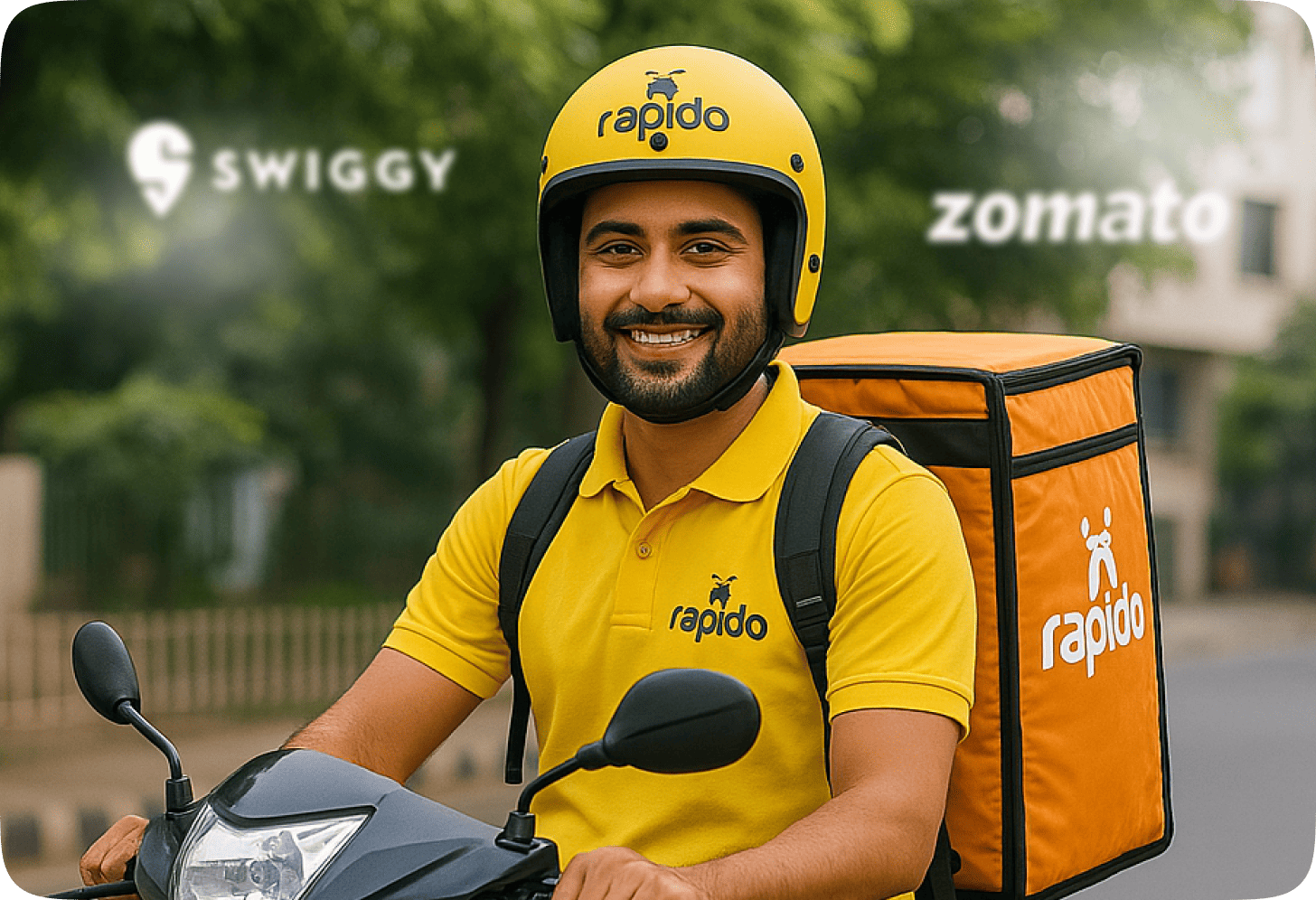BYD enters India, Rapido's food delivery plans & Wakefit's ₹1,000 Cr. playbook ✨
A lot to unpack in this edition.
We are back with our Friday edition. Today, we’ll cover three important business topics: BYD’s plan to manufacture in India, Rapido’s entry into food delivery, and Wakefit’s ₹1,000 Cr playbook. Let’s get into it.
BYD's India plans 🚙
First, some context.
The world’s largest EV maker, BYD, is gearing up to manufacture in India. While Tesla is about test market by importing, BYD is in talks to setup a factory near Hyderabad. The company has been selling EVs here since 2007. But local production could be a game-changer—reducing costs, bypassing import duties, and competing directly with homegrown and global players.
Fact.
BYD's best-selling model in India is the BYD Atto 3, priced at approximately ₹24 lakh (ex-showroom).
What does BYD currently do?
BYD imports EVs from China, which means hefty import taxes push up prices, limiting its market penetration in India. In 2023, the Indian government rejected a $1 billion investment proposal from BYD and its Hyderabad-based partner, Megha Engineering and Infrastructures Ltd (MEIL), to set up an EV manufacturing facility.How will this work?
BYD will start with vehicle assembly and plans to set up a 20-gigawatt battery manufacturing plant in India. Over the next five to seven years, the company aims to scale its production capacity to 600,000 EVs annually.
What it means for the ecosystem.
If the project moves forward, Telangana could secure one of the largest private investments in India’s EV sector. At the same time, Maharashtra is actively trying to bring Tesla’s manufacturing plant to the state. One thing is clear—whether it's BYD or Tesla, large-scale EV manufacturing will drive job creation, workforce upskilling, and further strengthen India’s manufacturing push.
Rapido’s Food Delivery Plans 🛵
First, some context.
Rapido, the bike-taxi market leader with ~50% market share is looking at the food delivery market as per a report by Economic Times. Rapido started in 2015 and has created a loyal user and driver base in the last 10 years.
Why is Rapido doing this?
Rapido is looking to unlock its next phase of growth after crossing $1 billion in annualized GMV. The company already provides delivery services for individual restaurants using its two-wheeler fleet. While nothing is finalized yet, this move could be an interesting way to carve out a share of the food delivery market and challenge the Zomato-Swiggy duopoly. In fact, Rapido does food delivery on behalf of Swiggy as well with Swiggy being an investor in the company.
Would the model be different?
Right now, Zomato and Swiggy operate on a commission-based listing structure. It will be interesting to see if Rapido disrupts this model in any way by bringing the same flat-fee funda. That said, the plan seems to be in its early stages, with little clarity on execution so far.
I sat down with Swiggy's ex-Chief Marketing Officer, Ashwath.
This was a short live session where he was teaching 200+ GrowthX members. Post session, he asked me: “What’s the one skill most marketers/ PMs struggle with, especially with brand?”
Two words flashed in my mind: creative & strategy. And we went with it. Over the next few months, we built a learning program for Marketers, PMs, and founders.
The learning program teaches 6 how to(s) —
+ Find business problems → marketing insights
+ Convert user insights → creative briefs
+ Articulate any creative idea
+ Sell that idea to the leadership
+ Go from Idea → marketing campaigns
+ Execute a world-class ad production.
We've distilled Ashwath Swaminathan's 20+ years of experience leading market teams at Unilever & Swiggy into one actionable framework. If you are solving creative strategy or want to build this as a core skill in life, this learning program is built for you. And no better person to learn it from, honestly. See you inside.
Wakefit's ₹1000 Cr. playbook
First, some context.
Wakefit started as a D2C mattress brand in 2016 but has now expanded into a full-fledged home solutions company, crossing ₹1,000 Cr in revenue. From selling just memory foam mattresses, it now offers everything from beds and wardrobes to sofas and study desks. But how did they crack the market in a category dominated by unbranded players and legacy giants? Let’s break it down.
Narrow-to-wide approach.
The company started with just two SKUs—an entry-level and a premium mattress. They ensured that the foam used was of the highest standard and introduced warranties, a move that wasn’t common in the industry. This was a stark contrast to other brands, which typically offer anywhere from 20 to 150 SKUs. By keeping it simple, Wakefit focused on perfecting its core product, building trust as a mattress brand, and positioning itself as the go-to choice for comfort.
Fact. Wakefit introduced mattress protectors - something uncommon in the industry - making customers feel valued while also extending the life of their mattresses.
The ultimate product “hook”.
Wakefit’s 100-day free trial became the ultimate hook. It changed how mattresses were sold online. Traditional brands like Sleepwell relied on showrooms, but Wakefit removed the risk of buying without testing. This built trust, drove online adoption, and made returns a non-issue.
Offline Strategy.
Legacy brands like Sleepwell and Kurlon dominated offline through dealer networks and opaque pricing. Wakefit took a different route - launching 100 experience centers to reach a broader audience. By skipping third-party dealers, it ensures transparent pricing and a seamless buying journey. This playbook is similar to how Lenskart used offline stores to build trust. The conversion can happen online once trust is formed offline. The key takeaway? Omnichannel is essential for scaling from 1 to 10 in the mass consumer market.
By the way, we hosted Chaitanya Ramalingegowda, the co-founder of Wakefit, on our inner circle podcast. Check out the episode here.
That’s all for now. See you next week :)
Thanks for reading GrowthX's Newsletter! This post is public, so feel free to share it.









Hey, I noticed that one post mentions figures in rupees (in crores) and the other in dollars. Is there a specific reason for using different currencies in these two contexts? Just curious to understand the distinction!